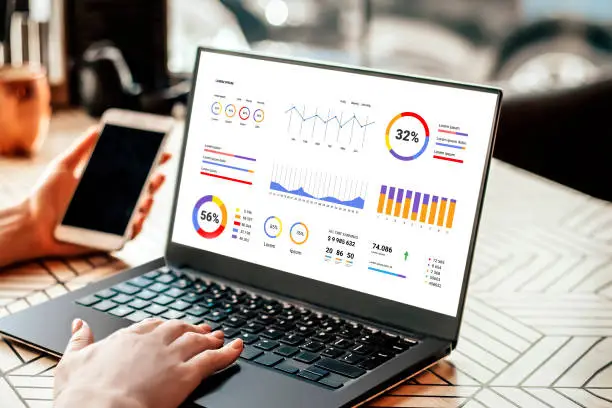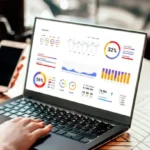1. Introduction to Data Analysis
What is Data Analysis?
Data analysis is the process of collecting, cleaning, and interpreting data to extract meaningful insights. It’s like being a digital detective—you look for patterns, identify trends, and help businesses make smarter decisions.
Why Data Analysis is a Game-Changer
Companies like Netflix, Amazon, and Google thrive on data. They analyze user behavior to personalize experiences. If you can crunch numbers and tell a story with them, you’re instantly valuable—even if you’re working from your kitchen table.
2. Basic Excel Skills
Using Formulas and Functions
Excel is like the Swiss Army knife for data. Learn basic formulas like SUM, IF, VLOOKUP, and INDEX MATCH. These will save you hours of manual work and make you look like a wizard to your boss.
Data Cleaning with Excel
Got messy data? No worries. Learn to use Text-to-Columns, Remove Duplicates, and Flash Fill. These tools help make raw data clean and usable in just a few clicks.
3. Mastering Google Sheets
Real-time Collaboration
Google Sheets allows you to work on data in real-time with teammates across the globe. It’s perfect for remote work and group projects.
Charts and Conditional Formatting
Make your data pop with pie charts, bar graphs, and color-coded cells. Visualization isn’t just pretty—it helps you tell stories that stick.
4. Learning Data Visualization
Tools: Tableau, Power BI & Datawrapper
Start with Tableau Public or Datawrapper. These tools offer drag-and-drop interfaces, so you don’t need to be a tech genius to use them.
Principles of Good Visualization
Clarity over clutter—keep it simple, use meaningful colors, and always label your axes. Think of your visuals as infographics, not abstract art.
5. Getting Started with Python
Why Python is Perfect for Beginners
Python reads almost like plain English. It’s widely used in data science, and you can install it free and start coding in minutes using Jupyter Notebooks.
Libraries You Should Know (Pandas, NumPy)
Learn pandas for data manipulation and numpy for numerical analysis. These are your bread and butter in Python-based data projects.
6. SQL for Data Queries
Understanding Databases
Think of SQL as your passport to databases. It helps you talk directly to large datasets stored in places like MySQL, PostgreSQL, or even Google BigQuery.
Writing Basic to Intermediate Queries
Start with SELECT, FROM, WHERE, then move on to JOIN, GROUP BY, and subqueries. SQL isn’t as hard as it sounds—and once you get it, you can dig deep into data quickly.
7. Data Cleaning Techniques
Removing Duplicates and Errors
Dirty data is useless data. Learning to spot and remove duplicates or typos is essential.
Handling Missing Values
Techniques like mean imputation, interpolation, or simply dropping rows—these help you preserve the integrity of your analysis.
8. Statistics Essentials
Descriptive Statistics
Start with basics like mean, median, mode, standard deviation, and range. These tell you the “shape” of your data.
Inferential Statistics
Learn how to draw conclusions from data through concepts like confidence intervals and p-values. It’s what separates gut feeling from hard proof.
9. Probability Basics
Real-life Examples of Probability
Understanding probability helps in predicting outcomes. From weather forecasts to game theories, it’s all math behind the curtain.
Why It’s Key in Data Analysis
Probability underpins machine learning models and risk assessment tools. It’s not just a math class memory—it’s the backbone of predictive analysis.
10. Introduction to Machine Learning
Supervised vs. Unsupervised Learning
Supervised learning teaches a model with labeled data, while unsupervised lets the model find patterns on its own. Think of it as training a dog vs. letting it roam a park.
Use Cases of ML in Data Analysis
Recommendation systems, fraud detection, stock predictions—machine learning makes data smarter.
11. Data Storytelling Skills
Crafting a Narrative
Don’t just show data—tell a story. Who, what, why, and how? Tie the numbers to real-world implications.
Knowing Your Audience
Speak the language of your listener. Executives care about results, not rows and columns. Your job is to bridge that gap.
12. Dashboard Design Skills
Tools to Use
Use Power BI, Tableau, or even Google Data Studio. Dashboards give users a snapshot of performance at a glance.
Best Practices for Clarity
Use filters, interactivity, and summary cards. Make it intuitive—you shouldn’t need a manual to read a good dashboard.
13. Using GitHub for Version Control
Basics of Git
Learn git init, add, commit, and push. It’s like Dropbox for code, but way smarter and trackable.
Sharing and Collaborating on Projects
Use GitHub to showcase your projects and collaborate with others. Hiring managers love it when they can see your real work.
14. Remote Freelancing as a Data Analyst
Platforms to Start (Upwork, Fiverr)
Freelancing platforms like Upwork and Fiverr are perfect for testing the waters. Start small, build trust, and grow your income.
Building a Portfolio
Document your projects—charts, Python notebooks, dashboards. Turn your learning into a showcase.
15. Creating Your Learning Path
Free Resources Online
Try Kaggle for datasets, Coursera and edX for structured learning, and YouTube channels like Tech With Tim or Alex The Analyst.
Structuring Your Study Plan
Pick 1–2 hours daily. Focus on one skill at a time, then apply it in a mini-project. Progress over perfection.
✅ Conclusion
Learning data analysis at home has never been easier or more accessible. Whether you’re eyeing a career switch or just love making sense of chaos, these skills are your ticket to opportunity. Start with Excel, grow into Python and SQL, and eventually dive into data storytelling and machine learning.
The key? Be curious, stay consistent, and keep building. You don’t need a degree to become a data rockstar—just a laptop and a love for insights.
❓FAQs
1. Do I need a background in math to learn data analysis?
Not really. A basic understanding helps, but most tools simplify the math for you.
2. Can I become a data analyst without a degree?
Yes! Skills and portfolio matter more. Many analysts are self-taught through online resources.
3. How long does it take to learn data analysis?
With consistent effort, you can grasp the basics in 3–6 months.
4. What’s the best tool for beginners in data analysis?
Excel and Google Sheets are perfect starting points. Move on to Python and SQL later.
5. Is data analysis a good remote job?
Absolutely. Many companies hire remote analysts. It’s one of the most flexible and high-paying tech roles out there.





